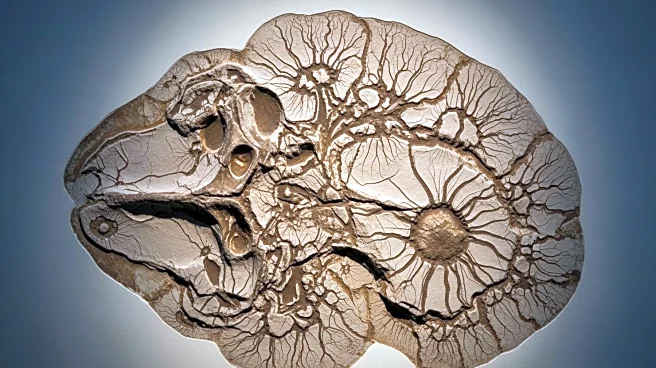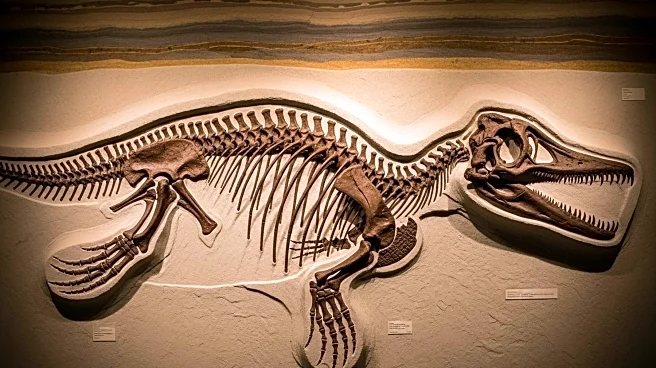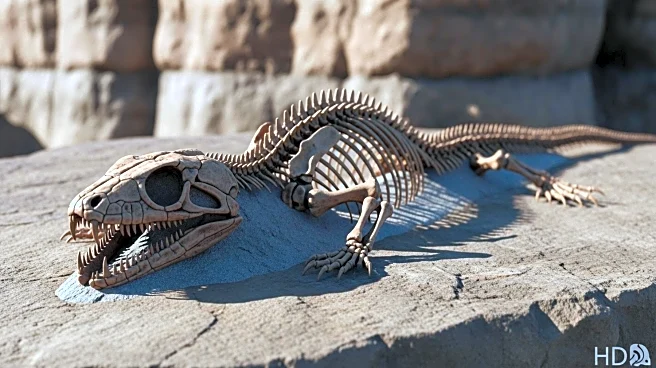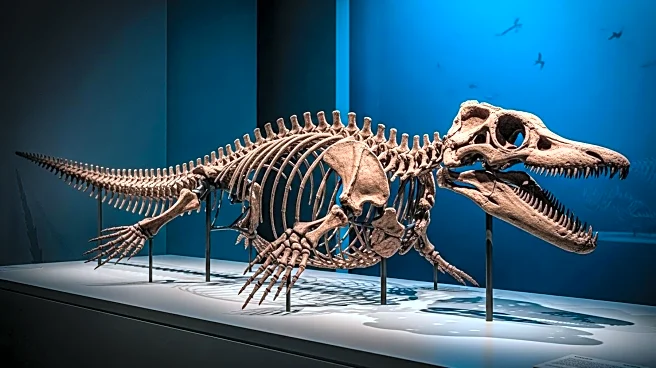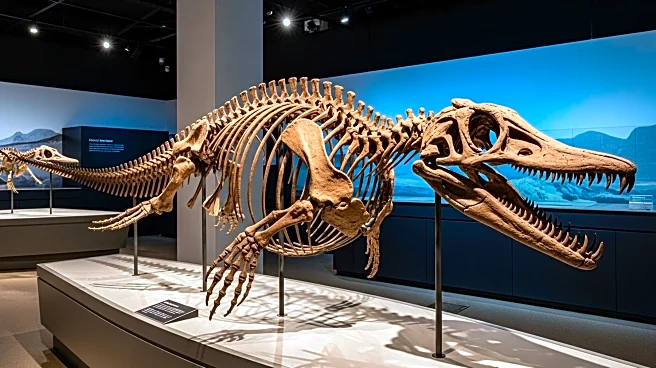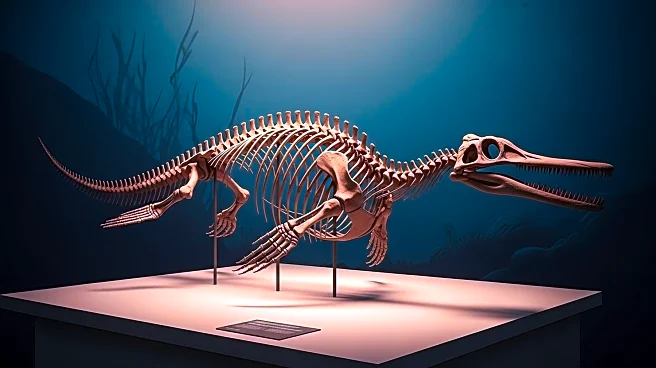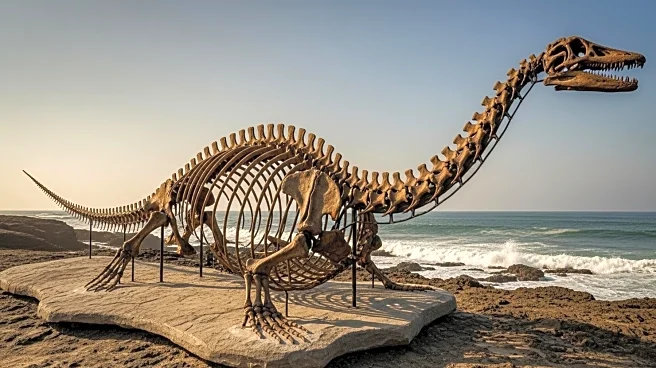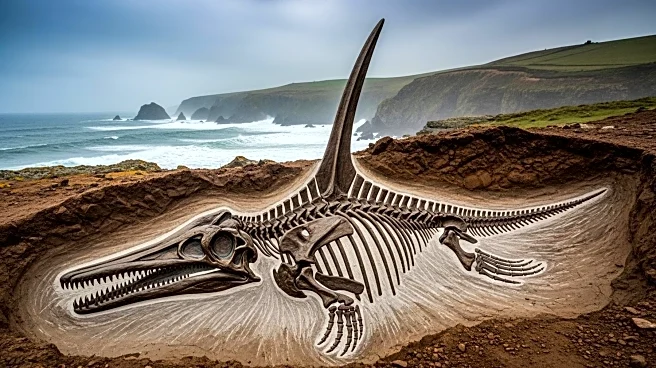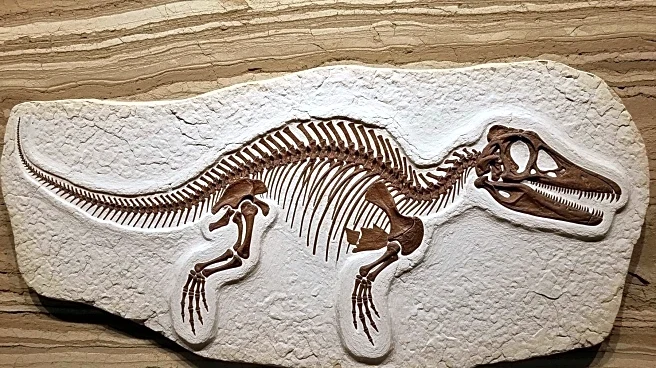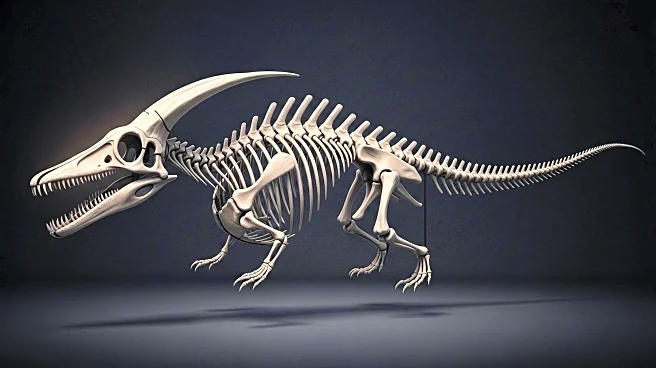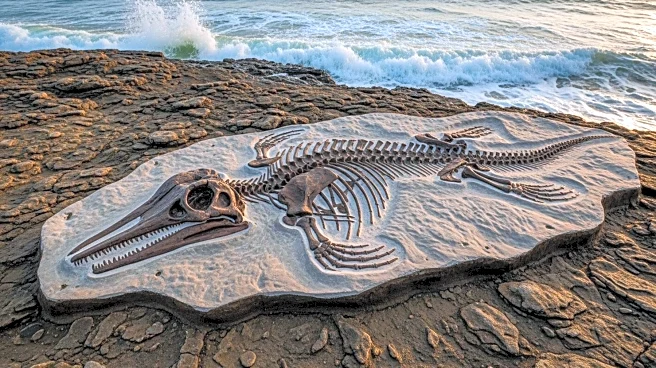What is the story about?
What's Happening?
An international team of scientists has uncovered fossils that provide insights into the evolution of the ventral nerve cord in ecdysozoan animals, a group that includes insects, nematodes, and priapulid worms. The fossils, from key Cambrian deposits, reveal the nervous system architecture of ancient animals, offering a rare glimpse into early evolutionary processes. The study, published in Science Advances, suggests that the common ancestor of all ecdysozoans possessed a single ventral nerve cord, with paired nerve cords evolving independently in certain groups.
Why It's Important?
This discovery is crucial for understanding the evolutionary relationships between ecdysozoan groups and the development of nervous systems. The findings suggest that the evolution of paired nerve cords facilitated greater coordination of movement, particularly in segmented animals, and may have co-evolved with changes in body segmentation. This research enriches our understanding of ecdysozoan evolution and highlights the role of the fossil record in addressing key questions about early animal development.
What's Next?
Further research will focus on exploring the connection between nervous system evolution and body segmentation in ecdysozoans. The study opens new avenues for investigating the evolutionary trajectory of nervous systems in other animal groups and understanding the broader implications for animal evolution.
Beyond the Headlines
The study highlights the importance of fossil records in revealing the complexities of early animal evolution. By linking nervous system structures to broader evolutionary trends, researchers can gain a clearer picture of how diverse ecdysozoan lineages arose and adapted to their environments.
AI Generated Content
Do you find this article useful?
